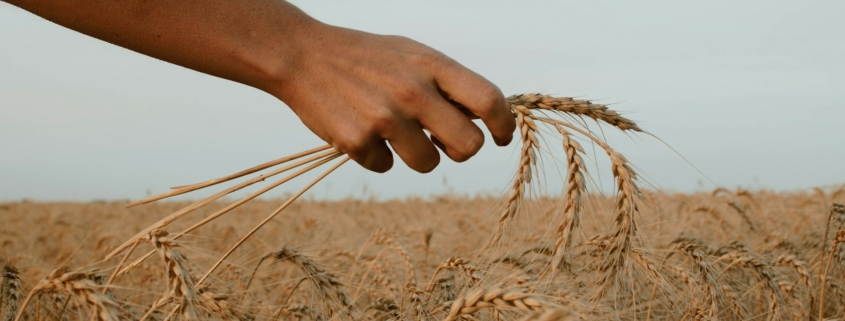Wheat has been a staple crop for centuries, forming an important part of our daily diet and agricultural systems. Farmers across the globe dedicate their efforts to cultivating this essential grain. However, the task of growing wheat isn’t always straightforward, especially when it comes to particular soil types. Among the many challenges that wheat growers face, sandy soils present a unique set of hurdles. These light and porous soils can make wheat farming difficult due to their drainage properties and nutrient retention issues.
Introducing the idea of bulk wheat can offer a solution to improve yields even on these tricky terrains. Bulk wheat, with its potential for large-scale planting and consistency, brings new strategies to the table for enhancing productivity on sandy soils. As we explore the characteristics of sandy soils and understand their impact on wheat growth, we’ll delve into practical approaches for overcoming these challenges and ensuring successful harvests.
Understanding Sandy Soils
Sandy soils are characterised by their coarse texture and large particles. Unlike clay soils, which hold onto water and nutrients due to their compactness, sandy soils drain quickly. This quick drainage might seem like an advantage, but it can lead to the leaching of water and valuable nutrients away from plant roots. As a result, the wheat growing on sandy soils often struggles to access the essentials it needs to thrive.
Farmers dealing with sandy soils often notice a few common issues:
1. Rapid Water Loss: The quick drainage means that plants get less time to absorb water, leading to drought stress even with frequent watering.
2. Nutrient Leaching: Essential nutrients like nitrogen and potassium are swept away easily, resulting in nutrient deficiencies.
3. Poor Structure: The loose nature of sandy soils can lead to erosion and instability, making it harder for wheat roots to establish a firm hold.
Despite these challenges, understanding the nature of sandy soils can guide farmers in implementing effective strategies to nurture healthier crops. By focusing on methods that enhance the soil’s capacity to retain water and nutrients, as well as stabilising the plant’s root system, growing wheat on sandy terrains can become a more manageable and rewarding endeavor.
Strategies to Improve Wheat Growth on Sandy Soils
Facing the unique challenges of sandy soils requires the right strategies. To support wheat growth, farmers can adopt several effective techniques that tackle the core issues associated with these lightweight soils. One of the first steps is to enhance soil quality. By adding organic matter like compost or manure, farmers can boost the soil’s water-holding capacity. Mulching also plays a key part in retaining moisture and protecting soil from harsh weather.
Irrigation is another factor to consider. Given sandy soil’s rapid drainage, setting up drip irrigation or using soaker hoses can ensure consistent moisture to the wheat roots without over-saturating the ground. Timing is everything, watering early in the morning or late in the afternoon can reduce evaporation, keeping the soil moist for a longer period.
Selecting the right wheat variety is just as important. Choosing varieties known for their tolerance to drier conditions can make a big difference. Consider seeds that are bred for deep rooting and rapid early growth, reducing the impact of moisture loss.
The Role of Bulk Wheat in Overcoming Challenges
Adopting bulk wheat for large-scale planting offers a considerable advantage in tackling these challenges. Bulk wheat can significantly enhance crop yields thanks to its uniformity and quality. Farmers who source bulk wheat can expect better germination rates and vigorous growth, which are essential for sandy soils that challenge plant establishment. By planting bulk wheat, farmers might notice an improvement in soil health over time, as the plants often encourage beneficial microbial activity that naturally enriches the soil.
Real-life examples illustrate how bulk wheat farming can turn things around. Consider a farmer who, after implementing bulk wheat strategies, saw their fields transform through consistency and improved grain quality. Such success stories underscore the value of bulk wheat in managing sandy soil conditions effectively.
Practical Tips for Farmers
Finally, let’s look at some practical advice for wheat growers. Effective seed treatments can bolster the resilience of seeds against challenging soil conditions. Treating seeds with coatings that help retain moisture or protect against soil-borne pathogens is beneficial.
Here are some best practices for planting and maintaining wheat on sandy soils:
1. Seedbed Preparation: Ensure the seedbed is firm and evenly prepared to enhance uniform germination.
2. Regular Monitoring: Keep a close eye on soil moisture levels and adjust irrigation as needed.
3. Fertilisation: Use slow-release fertilisers to provide a steady supply of nutrients, essential on sandy soils where nutrients can wash away quickly.
4. Crop Rotation: Consider rotating wheat with other crops that improve soil structure and nutrient content, which benefits future wheat planting.
Thriving Despite the Challenges
Navigating the obstacles of sandy soil doesn’t have to be daunting. With the right approach, wheat farmers can achieve robust yields. Key strategies like optimising soil quality, careful irrigation, and selecting appropriate wheat varieties ensure the crop’s success. Embracing bulk wheat for its consistency and quality further supports enhanced production.
By adopting these techniques, farmers can confidently tackle the demands of sandy soils and enjoy bountiful harvests. Implementing recommended agricultural practices fosters both resilience and productivity, paving the way for sustainable and fruitful wheat farming.
With the right strategies, overcoming the challenges of growing wheat on sandy soils is entirely possible. One way to support a more consistent and healthy crop is by using high-quality bulk wheat from Shepherd Grain, offering better germination and stronger growth to suit tough conditions.



